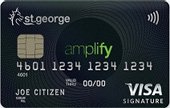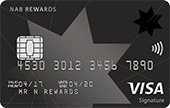A frequent flyer credit card is a way to earn the frequent flyer points and status points that can make travel a much better experience. Here's how they work and what to look for when comparing offers.
What is a frequent flyer credit card?
Frequent flyer credit cards earn frequent flyer points per $1 spent on eligible purchases made with a credit card linked to a specific airline’s frequent flyer program.
Points earned using the cards are credited directly to the cardholder’s frequent flyer points account with the airline. The points can be exchanged for award flights and seat upgrades, or other rewards and merchandise selected from the frequent flyer program’s online catalogue.
Frequent flyer credit cards often come with a number of perks and benefits designed to make travelling better, for example, airport lounge access, free flight vouchers, complimentary travel insurance, and flight inconvenience insurance. There is often a substantial sign up bonus too.
How frequent flyer credit cards work
The way you earn frequent flyer points varies between different frequent flyer membership programs, but they generally function in the same way as other types of rewards scheme: you earn points each time you use your card.
Typically, there is a flat rate of earning for every dollar spent on your credit card and a bonus rate for purchases with the program’s partners such as affiliated airlines, hotels, retail outlets and other partners. Different credit cards earn points at different rates within the same program – gold and platinum cards often earn more points than standard cards – and you may be able to earn bonus points during introductory offers. Black cards typically have the strongest earn rates, caps, and most generous welcome bonuses.
What is the best frequent flyer credit card?
The best frequent flyer credit card is the one that suits your individual lifestyle. It's a decision only you can make since there is no overall best card to suit everyone equally.
Things to consider when choosing which card to apply for.
- Preferred airline. For domestic Australian flights, that means choosing between Qantas or Velocity. But if you want to travel internationally, it would be worthwhile considering available partner airlines. Will you be able to use your points for the airline you want to fly long haul with?
- Flexibility. Do you want to earn Qantas / Velocity points and fly with them and their partners, or earn into a program that lets you transfer out into more rewards programs. The latter option can be beneficial if you don't mind so much who you fly with and like having more options.
- Perks. What do you value most? For example, are you more interested in airport lounge passes or status credits?
- Sign up bonus. Will you be able to spend enough to hit the spending target (if there is one) or will it mean buying stuff you don't need?
- Monthly spend. If you are a big spender, it might be worth looking for a card with no cap or one that's high enough for your projected spend.
Types of frequent flyer credit card
Broadly speaking, these are the main types of frequent flyer credit card in Australia.
- Qantas Frequent Flyer credit cards. If you are already a member of Qantas Frequent Flyer, link your card and earn Qantas points per $1 spent. If not, you can get a Qantas Frequent Flyer account for free with some cards.
- Velocity Frequent Flyer credit cards. Earn Velocity points per $1 spent. Many of the banks' own rewards programs let you transfer points into Velocity Frequent Flyer.
- No annual fee frequent flyer credit cards. Expect to get a lower earn rate per $1 spent, smaller sign up bonuses, and fewer travel perks.
- Frequent flyer credit cards for businesses. Earn points on money your business was already spending.
What frequent flyer points can you earn?
The main frequent flyer programs directly linked to credit cards issued in Australia are Qantas Frequent Flyer and Velocity Frequent Flyer. There are also credit cards that are linked with Emirates Skywards and Jetstar Dollars.
But what about other frequent flyer programs like Air New Zealand Airpoints, Singapore Airlines KrisFlyer Miles, Asia Miles, Thai Royal Orchid Plus, and Malaysia Airlines Enrich?
For those, there are many indirect frequent flyer cards that let you earn points and transfer them out to a partner program.
A good example of this is Membership Rewards, which lets you transfer points to a number of partner airlines. Likewise, points earned from credit cards linked with CommBank Awards, NAB Rewards, ANZ Rewards, Altitude Rewards, Amplify Rewards, and HSBC Rewards, can be transferred to a number of airline partners (specific partnerships vary per bank).
The exchange rate between in-house rewards programs and frequent flyer programs is rarely 1:1. Credit card providers will notify their cardholders of the prevailing exchange rate, and of any changes in the exchange rate. Typically, more than one rewards point is required in exchange for one frequent flyer point.
How much are frequent flyer points worth?
Sadly, 1 frequent flyer point is not worth $1 dollar. That would be amazing! You’ve got to think of the points you earn as a separate currency to the Aussie dollar.
- What you spend your points on will determine the value you are able to yield from those points.
- Redeeming your points for a $100 gift card is easy and convenient, but will not be the best value.
- Redeeming your frequent flyer points for a premium economy seat or business class seat on an international flight with most airlines will yield a much higher points-to-dollar value.
How to compare frequent flyer credit cards
When comparing credit card offers, examine all the features, rates, fees, and the details of the frequent flyer program before deciding what to apply for.
- Program partners. The program should involve airlines, hotels, retailers and other companies that you regularly spend with using your credit card and offer the opportunity to redeem the points for rewards you want to use.
- Earn rate (points per dollar spent). The value of the points you earn is very important. You should take the time to see how points are earned and the number of points needed for rewards to judge how much value for money the program really provides. For example, a card may offer 3 points per dollar, but the real value of each point may be lower than a card that offers 1 point per dollar, depending on the amount needed to redeem a ticket, restrictions and blackout dates, and so on.
- Introductory offers and sign up bonuses. Banks regularly offer bonus points during an introductory period, which can be a great opportunity to quickly earn rewards, but you should always examine how the program changes once the offer ends. Many cards also often run award sign-up bonuses.
- Extra benefits. Frequent flyer points credit cards usually feature other benefits alongside the rewards program, including travel insurance, lounge access (often via Priority Pass), concierge service, and purchase protection. In terms of travel insurance, the level of cover can be dramatically different from one card to another, with some offering cover you and your family internationally and domestically, while others only offer cover for you while overseas.
- Interest rates. As with any credit card, one of the most essential features to look at is the interest on the account, including purchase and cash advance rates. You want to use your credit card for everyday purchases, not just during travel, so it should feature a competitively low interest rate. Assuming you travel regularly, you should also research foreign exchange fees and foreign transaction fees.
- Annual fees. Many of these cards feature a significantly higher annual fee than standard credit cards. You should calculate how this balances with the credit card’s other features to make sure that the cost of using your card doesn’t negate the benefits.
Frequent flyer credit card pros and cons
As with any financial product, you have to weigh up the benefits against the drawbacks.
Pros
- Earn points per $1 spent. Get rewarded for spending the money you were going to spend anyway.
- Sign up bonus. Most frequent flyer credit cards come with a substantial sign up bonus.
- Cardholder perks and benefits. Many of the higher level cards come with airport lounge access and complimentary insurance. Some may even have travel credit vouchers redeemable for flights and status credits.
- Turn tax into rewards. Some cards let you earn on ATO purchases, but often at a reduced rate.
Cons
- Caps and thresholds. Some cards have a limit on the number of points that can be earned.
- High annual fees and rates. Most cards that earn points charge an annual fee, which can be high. If you don't use its benefits, or carry a balance, the value of rewards can be negated.
- Sign up bonus conditions. In order to get the bonus points, you will usually have to spend a certain amount with a certain amount of time.
- Airlines can devalue their program. If this happens, it may cost more points for upgrades and redemptions.
Other ways to earn frequent flyer points
Members of airline frequent flyer programs can obviously earn frequent flyer points by flying with the airline (or its partner airlines) when those flights were paid for with cash or a credit card. It’s not possible to earn points by taking flights which were themselves purchased by redeeming points. Credit cards linked to frequent flyer programs often offer a higher points earning rate for purchases of flights and seat upgrades made using the linked credit card.
But there’s also another way to earn frequent flyer points, simply by shopping at the Qantas Online Mall or the Velocity eStore.
When you’re ready to purchase Australia’s favourite brands from the nation’s most popular retailers (including eBay), simply access their websites by clicking on the link at one of these airline online shopping program sites first.
Your purchases will automatically be tracked and the frequent flyer points earned – up to 10 points or more per $1 spent – will be credited to your frequent flyer points account.
If you pay with your frequent flyer points credit card you can earn points twice – once for shopping via the airline’s online mall and once for paying with your frequent flyer points card.
Qantas also offers more ways to earn points, including:
- Taking Uber rides
- Dining at selected restaurants
- Using the Qantas Wellbeing app
- Buying Qantas Insurance or Qantas Wine
- Using GoCatch or ingogo apps for taxi rides
- Booking Airbnb stays via Qantas
- Catching a movie at HOYTS
- Ordering a meal via Deliveroo
The Velocity Points program has similar deals. Some of the ways you can earn Velocity Points are:
- Converting flybuys earned at the Coles group into Velocity points
- Shopping in-store and online at selected retailers, including Freedom and Snooze
- Booking a car with Europcar, Hertz or Thrifty
- Making Flexicar or Ola bookings
And once again, paying for any of this with a frequent flyer credit card lets you effectively double dip.












